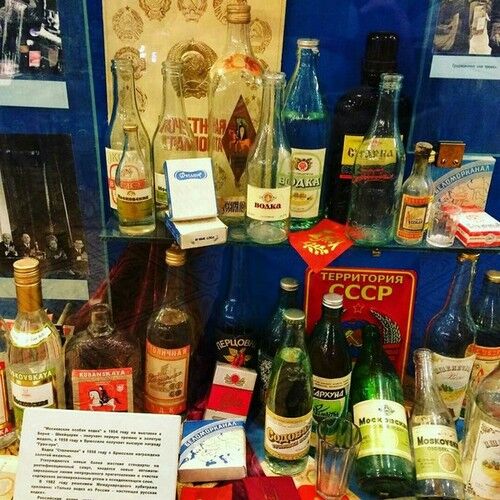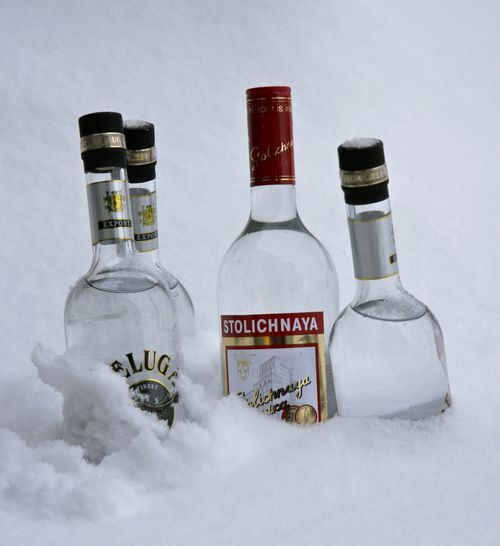Russia Traditions with Vodka
Most people associate Russia with bears, сold, severe winter, beautiful women and vodka. Almost everyone who goes to Russia is interested to taste Russian vodka.
There are different types of vodka produced in Russia. We invite you to taste some of them, as well as learn about that drink in the Russian culture. This drink also plays a significant role in the Russian language and folklore
The 17th century traveler Olearius once observed that ”Russians are more addicted to drunkenness that any nation in the world”.

Not for nothing do the Russians refer to their national drink as the demon vodka. The 17th century traveler Olearius once observed that ”Russians are more addicted to drunkenness that any nation in the world”.
Normally served from an ice bucket, vodkas is drunk neat in one gulp and “chased” with a mouthful of food. It goes down particularly well with “zakuski” (cold starters)- smoked salmon, salted herring, marinated mushrooms, pickles, salami, caviar etc.

Many Russians swear by a shot of vodka with a dash of pepper as a cure for the common cold.
Vodka breaks down inhibitions and produces a state of mateyness which the Russians refer to as “dusha-dushe” (heart-to-heart)
What to See and Expect
- Learn about technology of the process of making vodka
- Listen to an interesting story about how vodka influenced the course of important historical events in Russia.
- Taste 3 sorts of Russian vodka with traditional Russian snacks.Feel yourself Russian
- See vodka bottles of different sizes, from shkalik (or kosushka) to shtof and quarter
- Learn what kinds of vodka were the most popular among members of different social groups.
The History of Russian Vodka
In the Russian history, there was a period of time when a bottle of vodka became a kind of national currency, which was used to pay for all sorts of small services
The word vodka is derived from the Russian voda (“water”). Russians often refer to vodka as the “water of life”. Vodka is made from pure alcohol, extracted from cereals (usually grain) or potatoes.

It was Peter the Great who had strong relations with vodka but it did not affect his reign. During his time it became customary for foreign dignitaries to drink from the “Cup of the White Eagle”—a chalice containing 1.5 liters of vodka.
This made many ambassadors to travel in pairs, with one official drinking the vodka and the other attending to the important state issues that needed to be discussed.
During Catherine the Great Catherine reign people produced vodka, so being a very wise woman, she introduced a special tax for vodka which reasonably increased the budget of the country.
In the 19th century peasants got around the state vodka monopoly by producing an alternative, home brew with a wood bark base- the tradition of samogon or ‘do-t-yourself’ persists. The distillation process aims at maximum purification: for the Russian, vodka must be chistiy, literally “clean”, pure.
President Gorbachev himself a teetotaler waged his own war on vodka troubles in the mid-1980s. The drinking age was increased from 18 to 21, vodka rationed to two bottles a month and state factories ordered to produce more fruit juices.
Boris Yeltsin’s well-known preference for the hard stuff is more in keeping with the Russian character, although his vodka tax puts the more expensive brands beyond the pockets of most Russians who earn their living honestly.
In the beginning of the 20th century there were more than 5000 wineries in Russia located in St. Petersburg, Moscow, Nizhny Novgorod, Kazan as well as in other cities.








